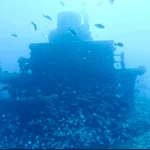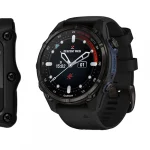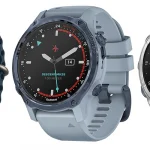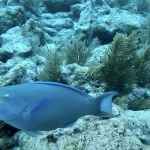When to Go: Timing Your Dive for Perfect Conditions
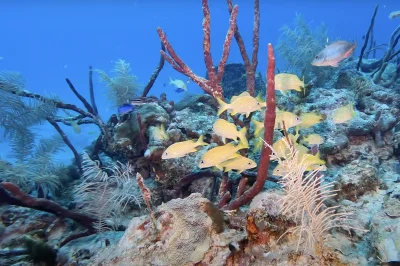
Table of Contents
- When to Go: Timing Your Dive for Perfect Conditions
- Debunking Wetsuit Myths: What Do You Really Need?
- Avoiding Common Pitfalls: Rookie Wetsuit Mistakes
- The Future of Diving Apparel: Key Trends to Watch
- Comparing Temperatures: Month-by-Month Breakdown
- Maximizing Comfort: How Wetsuits Enhance Diving
- Myths vs Reality: Understanding Wetsuit Materials
- What the Pros Wear: Insights from Experienced Divers
Introduction
Exploring the vibrant underwater world of Key West is an unforgettable experience for any scuba diving enthusiast. As you plan your trip, you may be wondering whether you need a wetsuit to make the most of your underwater adventure. This guide provides a month-by-month breakdown to help you decide how best to prepare for your dive, with insights backed by data and expert recommendations.
When to Go: Timing Your Dive for Perfect Conditions
When diving in tropical waters like those found in Key West, misconceptions about wetsuit requirements can lead to discomfort and unexpected challenges. Here are some clarified insights to ensure your diving experience is enjoyable and safe.
Water Temperature vs. Dive Duration
Misconception: Tropical waters are always warm enough to forgo a wetsuit.
Reality: While the surface temperature in March and April may hover around 75°F, extended dive durations can lead to cooling, especially during multi-dive days. Depth changes can also result in cooler conditions, making a 3-5mm wetsuit or thin skin suit advisable for comfort. For these conditions, a thicker 7mm wetsuit may simply be excessive.
Protection Beyond Cold
Misconception: Wetsuits are solely for warmth.
Reality: Full wetsuits provide crucial protection against sun exposure, coral scrapes, and marine stings, which are significant threats in the diverse marine environments of the Keys. A thin wetsuit or skinsuit still offers this important barrier.
Seasonal Adjustments
Misconception: The term “tropical” implies no variations in water temperature.
Reality: Even in Florida, water temperatures may drop by 10-15°F during winter months, leading to 70s°F readings in March and early April. For only a single dive, a shorty or skin suit may suffice, but for multiple dives, a thin fullsuit (3-5mm) is typically more effective.
Fit and Versatility
Misconception: Thickness is the only consideration for comfort in wetsuits.
Reality: A snugly fitting 3-5mm wetsuit generally offers better mobility and thermal efficiency than a thicker, ill-fitting suit. Convertible wetsuits, with detachable arms and legs, provide flexibility in changing dive conditions.
Accessories
Misconception: Hoods and gloves are unnecessary in tropical waters.
Reality: While optional, light gloves and hoods can help minimise heat loss during repeated dives in waters around 75°F. Proper fit on these accessories can aid in maintaining warmth without overheating.
Debunking Wetsuit Myths: What Do You Really Need?
Common Rookie Wetsuit Mistakes in Key West Scuba Diving
New divers in Key West often make critical mistakes when selecting and using wetsuits, which can lead to discomfort or even danger while diving. Here are some frequent rookie errors and how to avoid them for a better diving experience.
1. Incorrect Wetsuit Thickness Selection
A common error among novice divers is choosing the wrong thickness for their wetsuit. In Key West, water temperatures typically range from 70–85°F. During warmer months, a 3mm wetsuit is generally sufficient, while a 5mm wetsuit may be necessary during the cooler winter months. Failing to adjust for seasonal temperature changes can result in overheating in the summer or hypothermia in the winter, detracting from the diving experience.
2. Ignoring Local Gear Choices
Many rookies overlook the importance of observing the gear choices of experienced divers. For example, not noticing when others wear gloves to shield against stinging cells in the water or neglecting a hood during cooler conditions can lead to discomfort and injury. Paying attention to the equipment used by others can provide valuable insights into what is necessary for safety and comfort.
3. Poor Gear Preparation
- Not Inspecting Suits: Failing to check for holes, torn seams, or damaged zippers can lead to leaks and discomfort during a dive.
- Overreliance on Rentals: Depending on rental suits that may not fit properly can result in an ill-fitted dive experience. It’s crucial to bring personal gear that is checked and adjusted for comfort.
4. Oversights in Dive Planning
Rookies often forget to include wetsuit maintenance in their pre-dive checklists. This includes tasks like lubricating zippers and ensuring proper storage of gear. This lack of attention to detail mirrors broader rookie mistakes of neglecting safety protocols, such as checking air levels or understanding dive depths.
5. Misjudging Deep Dive Needs
Dive sites such as the Vandenberg require advanced certifications, and some new divers mistakenly underestimate their need for thermal protection in deeper waters. Even when surface temperatures feel warm, deeper dives can be considerably colder, necessitating a thicker wetsuit or additional gear.
Pro Tip: Regularly cross-reference water temperatures with local forecasts and consider layering with a dive skin or long johns if you’re uncertain. Additionally, participating in guided dives can help newcomers grasp the seasonal equipment adjustments needed for a successful dive.
Avoiding Common Pitfalls: Rookie Wetsuit Mistakes
The future of diving apparel is poised for significant changes as the industry adapts to new technology, consumer expectations, and environmental challenges. One key trend is the use of advanced materials that optimise thermal performance without compromising mobility. For example, suits like the Bare Ultrawarmth utilise infrared thermal technology that incorporates minerals to convert body heat into a warm barrier, keeping divers comfortable in cooler waters while remaining lightweight.
Sustainability is another crucial factor influencing diving gear innovation. As consumers increasingly demand environmentally friendly products, manufacturers are turning to biodegradable and recycled materials for wetsuit production. This shift not only minimises environmental impact but also satisfies a growing market segment that prioritises eco-conscious practices.
Customization is gaining traction as well, with divers looking for tailored experiences. Brands are now offering adjustable sizes and modular components that allow individuals to adapt their gear for specific diving activities, such as technical diving or marine research. This trend highlights the need for manufacturers to address diverse user requirements and enhance the overall diving experience.
The integration of wearable technology into diving apparel is also emerging as a notable innovation. Items such as the Apple Watch Ultra, paired with diving apps, are setting the stage for apparel that could include built-in sensors or connectivity features for health monitoring in real time, thereby improving safety and awareness underwater.
Furthermore, rental and subscription service models are becoming increasingly popular. These options cater to casual divers who prefer access to high-quality gear without the burden of ownership. Such services provide flexibility and convenience, aligning with a broader shift in consumer behaviour towards experiential purchases.
Finally, the dynamics of the diving market are evolving, particularly with the rise of online sales over traditional dive shops. Manufacturers need to innovate continually to stay competitive and appeal to the changing preferences of both recreational and professional divers.
The Future of Diving Apparel: Key Trends to Watch
Monthly Water Temperatures for Diving
Key West’s ocean temperatures vary moderately throughout the year, necessitating different wetsuit use as water warms or cools. Here are the average temperatures for each month, alongside recommendations for wetsuit usage based on thermal comfort:
- January: 69–71.2°F (20.6–21.8°C) – Thin wetsuit (3/2 mm) recommended for thermal protection.
- February: 70–71.2°F (21.1–21.8°C) – Thin wetsuit (3/2 mm) often used.
- March: 75°F (24°C) – No wetsuit needed for warm-weather divers.
- April: 78°F (26°C) – No wetsuit needed.
- May: 82°F (28°C) – No wetsuit needed.
- June: 85°F (29°C) – No wetsuit needed.
- July: 87°F (31°C) – No wetsuit needed.
- August: 87°F (31°C) – No wetsuit needed.
- September: 86°F (30°C) – No wetsuit needed.
- October: 82°F (28°C) – No wetsuit needed.
- November: 76°F (24°C) – Thin wetsuit optional for cooler divers.
- December: 72°F (22°C) – Thin wetsuit recommended.
Seasonal Patterns
The temperatures in Key West shift notably through the seasons:
- Winter (Dec–Feb): Temperatures range from 69°F to 72°F (20.6°C–22°C), requiring light wetsuits for thermal comfort.
- Spring (Mar–May): Temperatures rise to 75°F–82°F (24°C–28°C), generally eliminating the need for wetsuits.
- Summer (Jun–Aug): The warmest months reach between 85°F and 87°F (29°C–31°C), ideal for diving without wetsuits.
- Fall (Sep–Nov): Gradual cooling from 86°F to 76°F (30°C–24°C); light protection may be optional in November.
Key Considerations
- Diver Preferences: Many divers prefer wearing rash guards or thin wetsuits for sun protection or to guard against marine stings, even in warmer waters.
- Current Conditions: Always check real-time water temperatures for the day of your dive. Recent data indicated a temperature around 73°F (22.6°C) in the Gulf of Mexico.
- Seasonal Variance: Data from sources like NOAA may show slight discrepancies in temperature averages, which are best taken as general guidelines to improve comfort while diving.
Dive Computers
- Diving Computers for Female Divers
- Wreck Diving Computers
- Beginner Diving Computers
- Low-Light Diving Computers
- Technical Diving Computers
- Freediving Computers
- Underwater Photography Diving Computers
- Cold-Water Diving Computers
- Travel-Friendly Diving Computers
- Multi-sport Diving Computers
- Budget-Friendly Diving Computers
- Advanced Recreational Diving Computers
- Smartwatch-Compatible Diving Computers
- Child-Friendly Diving Computers
- Military or Professional Diving Computers
Comparing Temperatures: Month-by-Month Breakdown
Key West offers warm ocean temperatures year-round, ranging from 69°F (21°C) in January to 87°F (31°C) in July and August. Understanding these temperatures is crucial for choosing the right wetsuit for diving in the area.
Winter (December–February): During these months, the average water temperature hovers around 69–72°F (21–22°C). This range indicates that divers should consider using a shortie wetsuit (3/2mm or 4/3mm) for extended dives to prevent hypothermia. Many dive operators in Key West provide these suits for rent or include them in dive packages.
Spring (March–May): As temperatures begin to rise, the average water temperature increases to 75–83°F (24–28°C). A thin shortie wetsuit (1.5–2mm) or rash guard may suffice during this season. These options will help keep divers comfortable for longer as they explore the vibrant underwater ecosystems.
Summer (June–August): The summer months experience the highest water temperatures, averaging 86–87°F (30–31°C). During this time, wetsuits are generally unnecessary. Divers should focus on sun protection, opting for rash guards instead to shield their skin from harmful UV rays without overheating.
Fall (September–November): Temperatures begin to cool slightly, with average water temperatures ranging from 76–86°F (24–30°C). A shortie wetsuit is advisable for cooler days in November (around 76°F), while a rash guard is suitable for the warmer early fall months.
Most dive operators in Key West offer wetsuits, especially during the cooler months. It’s a good idea to check with rental services to understand the availability of suits, as temperatures below 80°F may warrant the use of protective gear.
Maximizing Comfort: How Wetsuits Enhance Diving
Wetsuit materials and their effectiveness in diving involve both proven science and common misconceptions, particularly relevant to tropical environments like Key West. Here’s a breakdown of key points:
Effective Materials and Mechanisms
Modern wetsuits primarily use neoprene foam as the core material, backed by nylon or spandex layers to enhance durability. Neoprene’s effectiveness stems from:
- Gas-filled bubbles: Tiny nitrogen gas cells trapped in neoprene provide insulation by reducing heat exchange with water.
- Snug fit: Properly fitted suits minimise water ingress, preventing “flush” (cold water replacing warmed layers), which preserves body heat.
- Thickness: Thicker neoprene (e.g., 5mm–7mm) offers greater buoyancy and insulation, critical in colder waters.
Debunked Myths
1. “Magic” Coatings or Additives
Claims about nano-colours, mineral-infused linings, or metallic foils improving warmth are disproven. These technologies may work in air but fail underwater, as water absorbs heat 25x faster than air, negating any reflective benefits.
2. Overestimating Gimmicks
Products like “titanium-infused” or “seaweed-treated” neoprene provide no measurable thermal advantage. Buoyancy and warmth rely solely on neoprene thickness, fit, and coverage.
3. Loose-Fitting Suits Equal Warmth
A loose suit allows excessive water flow, defeating the purpose of trapping a thin thermal layer. A snug fit optimises insulation without restricting movement.
Buoyancy and Practical Considerations
- Full vs. partial coverage: Full-body suits provide greater buoyancy due to more neoprene material.
- Thickness for tropical diving: In warmer waters (e.g., Key West), thinner suits (2–3mm) often suffice, prioritising flexibility. However, colder dives may require thicker neoprene.
- Avoiding damage: Never dry suits in machines, as heat degrades neoprene and voids warranties.
For Key West diving, where waters are typically warm, a thinner, well-fitting wetsuit suffices for comfort and buoyancy, while adhering to the foundational principles of neoprene’s effectiveness.
Myths vs Reality: Understanding Wetsuit Materials
Wetsuit Recommendations from Experienced Divers
When it comes to selecting the right wetsuit for diving in Key West, professional divers emphasise the importance of understanding local water temperatures and personal comfort levels. The waters around Key West can reach a balmy 80°F or higher during summer months, allowing some divers to opt for minimal coverage, such as a 1-2mm shorty wetsuit or even a rash guard paired with board shorts. This combination provides ample mobility while protecting against sunburn and minor abrasions from coral or marine life.
For spring and autumn months, when water temperatures range from 70-80°F, divers typically choose a 3mm full suit. This thickness offers a good balance of warmth and flexibility, making it suitable for various diving activities while still providing significant body coverage. Many divers feel comfortable with this thickness in and around the Florida Keys.
During winter, temperatures can dip below 70°F, so a 5mm full suit becomes essential for those vulnerable to the cold. These suits provide better insulation, ensuring a comfortable underwater experience. Layering options for added warmth, such as wearing a 1.5mm shorty over a 3mm full suit, is recommended.
Most dive shops in Key West offer wetsuits for rent, typically in 3mm or 5mm varieties, which can be invaluable during cooler months. Divemasters often suggest trying on different brands to find the best fit, as personal comfort significantly impacts diving enjoyment. Brands like Nautilus are favoured by many divers for comfort and durability in Florida’s unique water conditions.
What the Pros Wear: Insights from Experienced Divers
Winter (December–February)
Water Temperature: Mid-70°F (23–26°C). This season is characterised by cooler temperatures, making it essential to choose appropriate thermal protection.
- Recommendation:
- 3–5 mm full-length wetsuit: A 5 mm is ideal for those sensitive to cold, ensuring adequate warmth during dives.
- Optional add-ons: Consider a 3–5 mm hooded vest or gloves for longer dives, particularly if you are diving frequently or for extended periods.
Spring (March–May) & Fall (September–November)
Water Temperature: 75–80°F (24–27°C). These transitional seasons offer slightly warmer conditions, allowing for versatile wetsuit choices.
- Recommendation:
- 3 mm full-length wetsuit: This thickness provides an excellent balance of comfort and protection without being overly warm. Divers should avoid 7 mm suits, as they are unnecessary in these temperatures.
- Gloves and hoods: Typically not required unless divers are engaging in multiple dives daily.
Summer (June–August)
Water Temperature: Mid-80°F (29–30°C). The hot summer months often lead divers to prefer lighter options.
- Recommendation:
- 1–3 mm shorty or skin suit: These options are popular as they provide minimal warmth, helping to avoid overheating.
- Protection: Focus on sunburn prevention and abrasion resistance; many divers choose skin suits to enhance comfort while still ensuring safety.
Key Considerations
- Full suits vs. skins: Regardless of temperature, full suits offer greater protection against stings and environmental elements, which is crucial even in summer.
- Rental options: While dive operators may offer wetsuit rentals, it’s advisable to bring your own for a better fit and consistency.
- Depth effects: Remember that while surface temperatures can be warm, colder water can be found at greater depths, potentially necessitating a thicker suit during winter months.
Sources
- Key West Dive Center – Wetsuit Requirements
- Scuba Diving Magazine – Florida Keys Gear Checklist
- ScubaBoard – Wetsuit Thickness in the Keys
- Scuba Diver Life – Top Newbie Diver Mistakes
- Silent World – What Kind of Wetsuit Should I Wear for Scuba Diving in Key Largo?
- ScubaBoard – Newbie Wetsuit Question
- Business of Diving – Scuba Industry Trends
- Abyss Scuba Diving – Exploring New Scuba Technology

